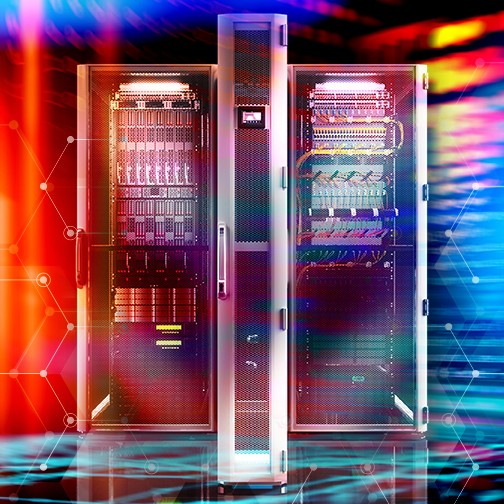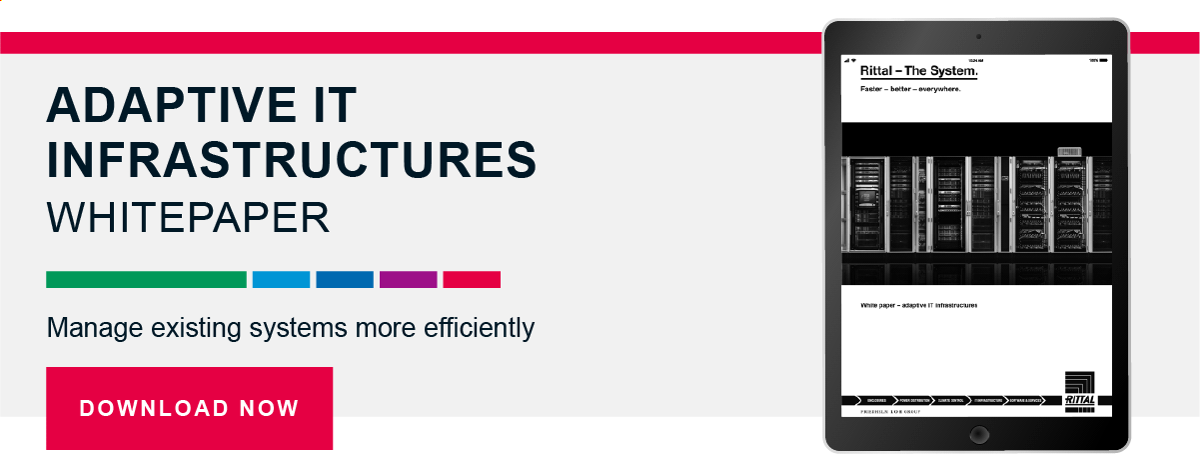Why Modular IT Enclosures Are the Best Option for Data Centers
Of all the decisions Facility Managers need to make when it comes to their data center IT enclosures, one of the simplest ones is to select modular enclosures. They provide real long-term value via their flexibility, scalability and ease of use. This post takes a look at why modular enclosures are an ideal fit for just about any IT space or application.
Benefits of Modular IT Enclosures
Fundamentally, the way the modular enclosure is constructed is at the core of its capabilities. A modular enclosure utilizes an internal frame with external skins (walls, doors, and roof) installed over the frame members. This is what makes modular enclosures a strong, flexible option for both data centers and Edge systems.
Strength
- In modular enclosures, the weight of the equipment installed in the enclosure is distributed to the frame, not the skins, leaving the external skins unstressed. This means the complete enclosure (frame and skins) will have reduced weight, making the enclosure easy to handle, position in place, potentially reducing delivery costs and installation labor. Modular enclosures can support up to 3,200 lbs. of installed appliances within the same footprint, providing cost-effective and space saving deployments.
- Modular enclosure frames are strong enough to allow for simple plug hinges. These types of hinges are infinitely easy (and fast) when it comes to removing/replacing a door – one person can handle the task.
- Because of the frame’s strength, data centers have multiple configuration options available to them. Multiple enclosures can be safely joined together, in any configuration.
Flexibility
- Modular enclosures get their strength from their frame system; these frames also provide optimal configuration flexibility. Each frame features pre-drilled holes spaced at standard distances, allowing for accessories to quickly be added to the interior without drilling or welding
- A modular enclosure is made of parts that can be rearranged without any need to cut/weld – these units can quickly be reconfigured by the site staff, and additional equipment – even if the sizes of that equipment don’t match what’s already in the enclosure – may be able to share the enclosure space, reducing footprint on the factory floor
- A modular enclosure can be compartmentalized, allowing IT equipment to be installed in the same cabinet as power equipment. This can save floor space in the data center, and makes it possible to have equipment operating on different power feeds
- Modular enclosures allow for thermal isolation – applying different cooling methods within the same enclosure to accommodate various types of equipment. This feature helps reduce cost and minimize overall footprint. As an example, equipment in one compartment that needs to be sealed from the outside air can be cooled using dedicated heat-removal, while the rest of the equipment can utilize another
Conclusion
All these factors combine to make modular enclosures a smart choice for IT deployments, from the data center all the way out to The Edge. A durable, well-engineered modular enclosure gives Facility Managers the right solution to address the need to manage costs and labor – today, and as densities get higher and the need to utilize space wisely continues to be important drivers. You can learn more about the specific details of modular enclosures by viewing one of our helpful content items, titled the “Modular Enclosure Buyer’s Guide.” And, if you’d like to talk about your specific needs, we’re always happy to talk!




